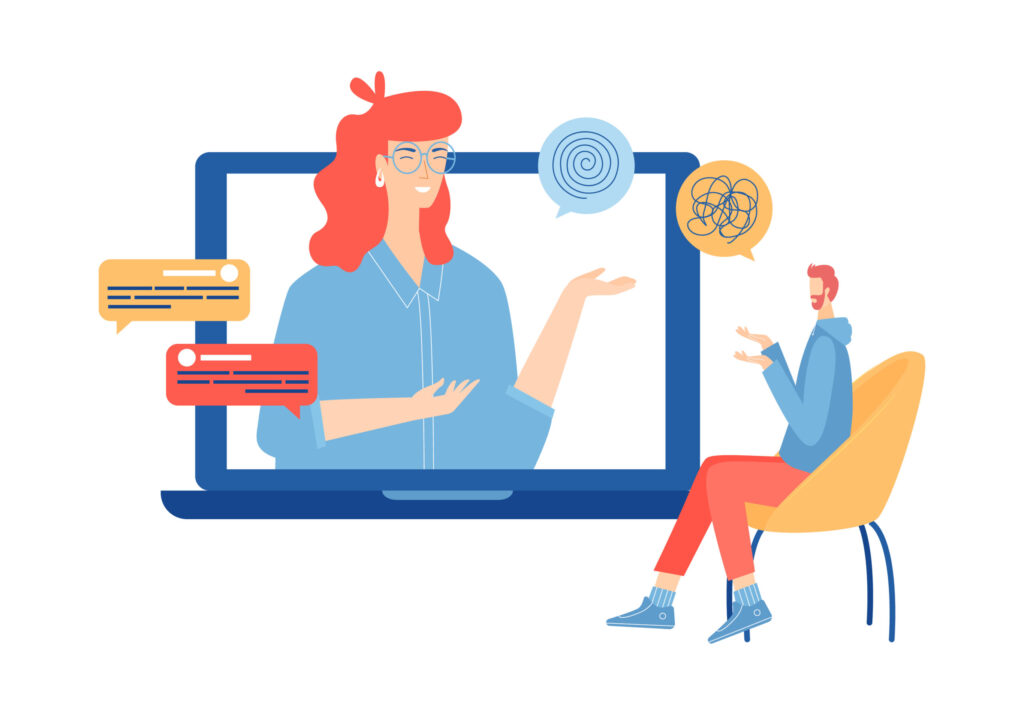Medically Reviewed By: Dr Gideon Kwok
Key Takeaways
–Teletherapy is an important practice in the field of mental health. Studies have shown Teletherapy to be just as effective as in-person therapy. While it may take some getting used to, it can be beneficial to many people, particularly those recovering from or living with illnesses, as well as those living in remote locations. It provides better access to care and can be used in the comfort of your own home.
–Teletherapy emerged as a vital tool during the COVID-19 pandemic, enabling therapists worldwide to continue offering their services while maintaining safety protocols. It has revolutionized mental health care, providing access to effective therapeutic services beyond geographical and health barriers.
–With its growing popularity and the continuous advancements in technology, it’s clear that Teletherapy will remain an integral part of mental health practices for years to come.
What is Teletherapy? How does it work?
Teletherapy has been around for a while, but during the COVID-19 pandemic, therapists all around the world employed it as part of their services to help guarantee everyone’s safety against the spread of the virus as well as ensuring people who need therapy can still receive it.
Teletherapy, at its most basic, is therapy conducted over the phone or via a videoconferencing system. It can be utilized for many different kinds of therapeutic purposes and has proven to be as effective as face-to-face therapy. Teletherapy services are typically provided over secure video conferencing platforms specially designed for healthcare purposes. These platforms are compliant with health information privacy regulations, like HIPAA in the U.S., to ensure patient information is securely handled and protected. At the scheduled time, the client and therapist connect through the chosen platform. The therapy session is then conducted similarly to a face-to-face therapy session, with the client and therapist communicating in real-time, only it’s done virtually.
More therapists are implementing this type of virtual mental health care into their practices as video conferencing software has improved over the past couple of years.
Teletherapy vs Telepsychiatry
Teletherapy and Telepsychiatry are both types of Telehealth services, which involve providing healthcare remotely through digital communication platforms. It is important to note that Teletherapy is not the same as Telepsychiatry, which can consist of services such as psychiatric evaluation, diagnosis, and medication management. Not all Teletherapy practitioners provide Telepsychiatry services.
The main difference between these two terms lies in the type of service provided and the professional providing it. Teletherapy is a more general term that includes all types of psychological therapies provided remotely, whereas Telepsychiatry refers specifically to psychiatric services provided remotely by a psychiatrist.
Pros and Cons of Teletherapy
Pros
- Accessibility: Teletherapy can be a great solution for people who live in remote areas, who can’t leave their homes, or who don’t have access to transportation. It can also help those who travel frequently maintain consistency with their therapy sessions.
- Convenience: Sessions can be held wherever is most comfortable for the patient, whether that’s at home, in a private office, or somewhere else. This also eliminates commute time, making it easier to fit appointments into a busy schedule.
- Increased Availability of Specialists: Teletherapy can allow individuals to access therapists who specialize in specific areas that might not be available in their geographical area.
Cons
- Technical Difficulties: Not everyone has access to high-speed internet or devices needed for video conferencing. There’s also the risk of technical issues during a session, which can interrupt or delay therapy.
- Therapeutic Relationship: The physical presence in a room with a therapist can be an important part of the therapeutic process. Some non-verbal cues might be missed over video calls, and the connection may feel less personal for some individuals.
- Privacy Concerns: Despite efforts to make teletherapy secure, there’s always some risk when using digital platforms. There’s a possibility of breaches of confidentiality, though they are rare with the use of HIPAA-compliant platforms.
Conclusion
MarkiTech contains a diverse portfolio of subsidiaries, each dedicated to digital health innovations. They emphasize telehealth, telemedicine and the establishment of virtual clinics, with a distinct mission: supporting seniors as they age at home while facilitating their caregivers.
Sensights.ai stands out for its emphasis on remote patient observation and solutions tailored for aging. By harnessing the power of artificial intelligence, it monitors patients’ health continuously, ensuring caregivers and patients are constantly connected and informed.
Meanwhile, Veyetals adopts rPPG and advanced AI-driven algorithms to gauge vitals on-the-go. It does this by analyzing the light reflection from blood vessels beneath the patient’s skin, allowing for non-intrusive and instant health checks.








